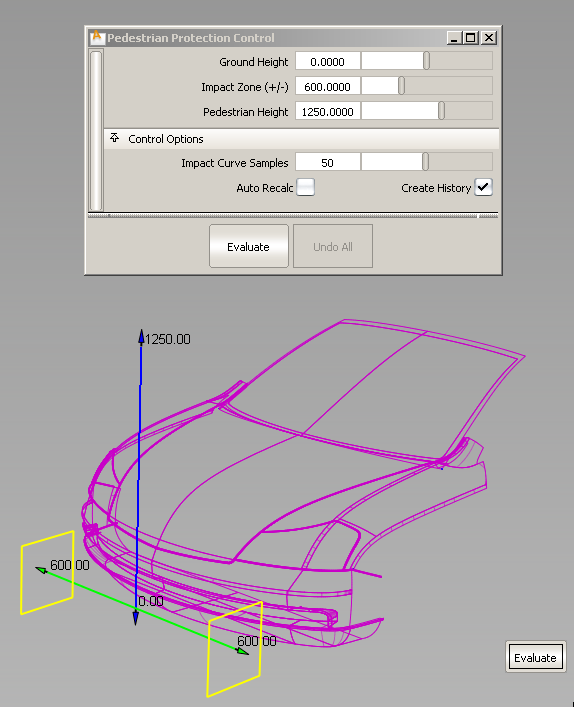Create a degree 1 curve representing the impact zone of a pedestrian’s head with a set of surfaces that form the hood of a car.
By knowing where the head of a pedestrian impacts the hood of a car during a collision, the design can be modified to reduce collisions with stiff under-structures, improving the ability of pedestrians to survive collisions with vehicles. This is now required by automotive safety guidelines in several countries.

This impact curve produced by the Pedestrian Protection tool has construction history and updates when the input values (such as pedestrian height) or target surfaces are modified.
Generate an impact curve
 ❒.
❒.
The surfaces turn purple.
A manipulator appears 100 mm in front of the selected surfaces.

The impact curve is calculated and drawn. An annotation is attached to the curve showing the corresponding pedestrian height.

 toggles the selection. See Additive Selection mode for
more details on the Selection Options.
toggles the selection. See Additive Selection mode for
more details on the Selection Options.
The impact curve and its annotation update.
After exiting the tool,
you can still edit the impact curve’s parameters by choosing Object Edit > Query Edit  and selecting the impact
curve, or by selecting the impact curve first then re-entering the Pedestrian
Protection tool.
and selecting the impact
curve, or by selecting the impact curve first then re-entering the Pedestrian
Protection tool.
Since the impact curve has construction history, modifying the input surfaces (for example by pulling CVs) causes the curve to update.
Click Undo All to remove the impact curve and start again.